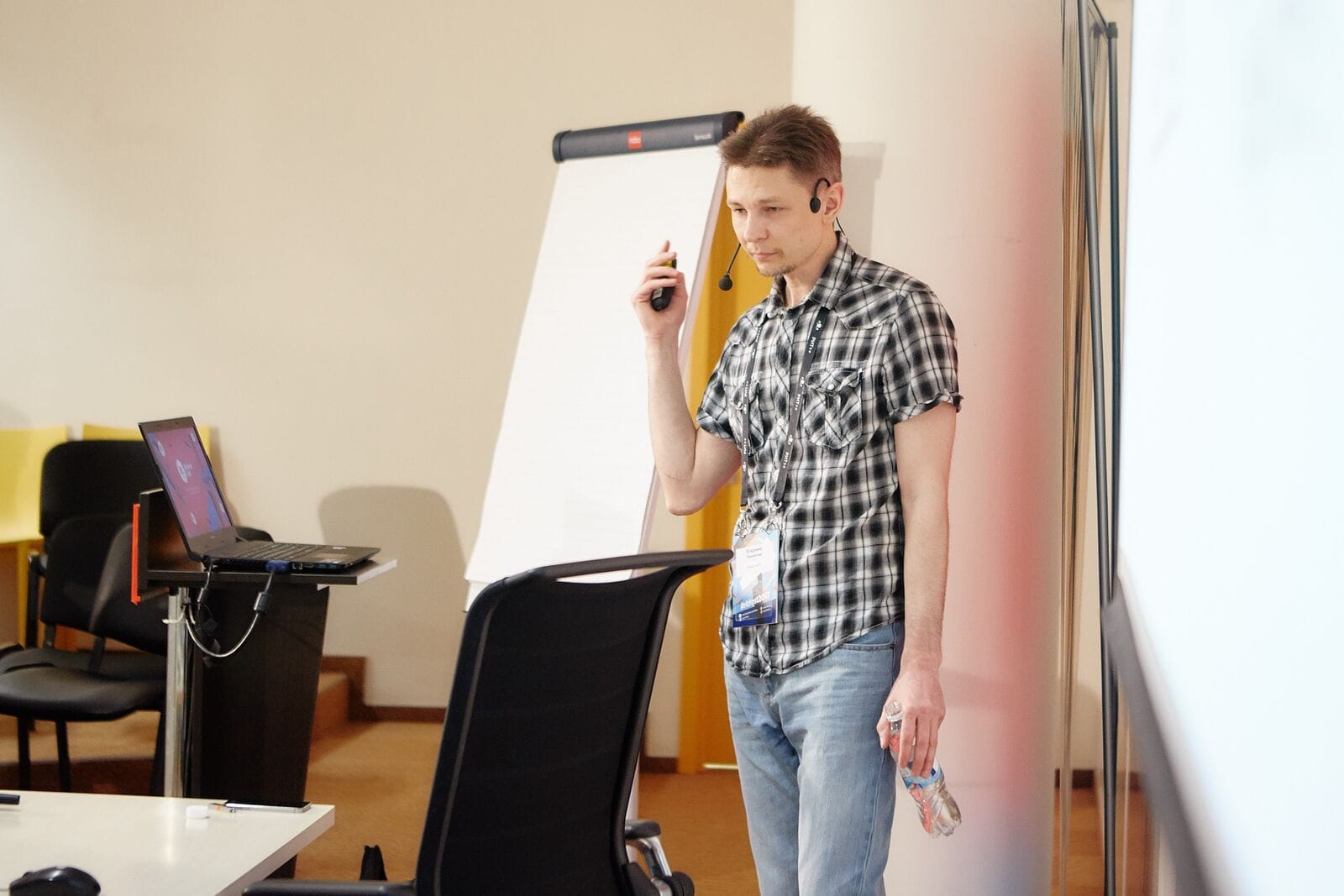Have you heard about
Tarantool Conference or shortly
T + Conf ? Everybody probably knows what Tarantool is, but we will tell you everything about the conference now.
 T + Conf
T + Conf is a conference not only about Tarantool itself, but generally about using
in-memory computing , Tarantool / Redis / Memcached, cooperative multitasking and
Lua to develop
high-load fault-tolerant services .
When and where?
Very soon,
on June 21, 2018,
in the office of Mail.ru Group (Leningradsky Prospect 39, p. 79).
It will be
full time - the reports will begin at 10:00 and end at 19:00. We have identified two streams, one of which is entirely devoted to
enterprise architecture , and the second one combines performances related to the ecosystem around Tarantool, including in the format of tutorials. Consequently, they will be of interest not only to
experienced developers , but also, on the one hand, to
beginners , and on the other, to
architects in the corporate sector.
The schedule can be studied at the
link , and below are brief descriptions of
all the reports - there are not so many of them, we can allow, not to miss anyone.
Community & tutorials
VShard - horizontal scaling in Tarantool
Vladislav Shpileva will talk about the internal structure of
VShard - an alternative implementation of sharding in the Tarantool DBMS, - about its subsystems and implementation, with examples of use.
In VShard, rebalancing is performed in stages, you can specify an arbitrary shard function to ensure the locality of the associated data, the result of the calculation of the shard function is stored in each record and is not recalculated.
Tarantool Migration to Kubernetes
As with most databases, Tarantool is very easy to deploy to Kubernetes in a single instance, but there is no way to scale the service with a single command as the load increases. As part of the report,
Alexander Golovko (Valarm) plans to have time to
talk about the process of
transferring all microservices to the inside of Kubernetes from the point of view of Tarantool services, what difficulties were there, and what tools were used to solve them.
Create a highly loaded application for Tarantool from scratch
Vladimir Perepelitsa in the tutorial format
will show that Tarantool is a database that has great potential for use as
an application server , and tells you how to unleash this potential. Also consider the strengths and weaknesses of the language Lua, step by step on the example of creating a queue server.

Using Tarantool in .Net projects
Anatoly Popov from Evote.com recalls that .Net is not only Windows, but also Linux, and OS X, and plans to
share experiences using
Tarantool in .Net Core , talk about the pros, cons, problems, and ways to solve them. And to answer the important question: is it possible to squeeze
2M RPS from one server to .Net Core?
Tarantool Replication: Configuration and Usage
In recent versions of Tarantool, several additional features have appeared that facilitate the configuration and use of replication in a cluster. One of the developers of the DBMS,
George Kirichenko, in his
report will consider the basic principles of the device, dwell in detail on the internal structure of the state vector - vclock. And much more directly from the first hand is not for you to read the documentation.
New features Tarantool 2.0
Kirill Yukhin (Tarantool) plans to
review the new features that are supposed to be added to the major-release: how and to what extent the SQL language will be used, the synchronous replication review, the new approach to sharding, interactive transactions, and DDL in transactions.
Creating production-ready applications on Tarantool
Tarantool is an application server, which means you need to be able to write applications correctly on it.
Igor Latkin from KTS Studio
will show how to properly
build the layout of the application for different cases, what existing libraries and modules help to make life easier not only during development, but also when running it in production.
Enterprise architecture
The architecture of billing a new generation: transformation with the transition to
Tarantool
Andrey Knyazev will tell about the transformation of the billing system into MegaFon, about the prerequisites (deadlock of vertical scaling, growth of load, etc.), what technological challenges were and what happened in the end. In particular, such obvious lessons as, for example, that solving complex problems
takes time , which for some reason is always forgotten.
Non-Volatile Memory and DBMS
Andrei Nikolayenko from IBS
plans to touch on a number of questions regarding responsive byte-addressable non-volatile memory, which recently appeared from several vendors at once. There will also be presented
the test results , both handwritten and published by other researchers. It will be interesting to everyone who considers the price and speed of processed terabytes not only today, but also in the near future.

How do we test the new Sberbank platform based on GridGain
Pavel Lipsky promises to
tell why Sberbank is switching to In-Memory Data Grid (IMDG) technologies, and how they
are testing a new platform based on GridGain.
Tarantool as an application server for IoT
Vladislav Zaitsev from Nokia is going to approach the topic from his side - from the
Internet of Things and
tell why the Internet of things is a control system, where does Tarantool and why it is, why not (almost) the database, and how to put it all together.

Interior design, tuning and monitoring Tarantool / Vinyl
Of course, architect Tarantool DBMS
Konstantin Osipov can not speak at this conference. He will make a report in which the architecture of
Vinyl (the implementation of the disk storage engine in Tarantool), possibilities and, most importantly,
tuning and performance monitoring mechanisms specific to this engine will be considered in the most consistent and detailed manner.
Let 's
finish the program with a round table with a program committee codenamed “
Tarantool Roadmap ” - we will discuss issues important for the community, outline our perspectives, express our concerns and wishes - we will dedicate time to open communication.
As you can see, Tarantool developers have something to talk about, which is not surprising. But also many reports are based on real experience, and not for toy purposes, but in large corporations. Their stories, starting with the choice of technologies, will be useful to those who are at the beginning of the journey, and those who have already learned the subtleties and are looking for great opportunities.
Thus, we return to the initial thesis - the
reports will be for everyone who is somehow connected with the in-memory concept.
Networks around the conference
Those who do not have time to get to the conference in person, it remains to wait for the video after the reports on our youtube channel on server programming, databases and highload. We cannot name exact dates of publication, therefore it will be safest to subscribe.
It is convenient to ask questions to the organizers, speakers or other participants, follow the updates and news in the Telegram-chat (@TarantoolConfTalks) of the conference.
In social networks ( https://www.facebook.com/TarantoolConference/ , https://vk.com/tarantoolconf ) you can get acquainted, look at the photos that will appear there after the conference, write reviews, i.e. do what they were made up for.